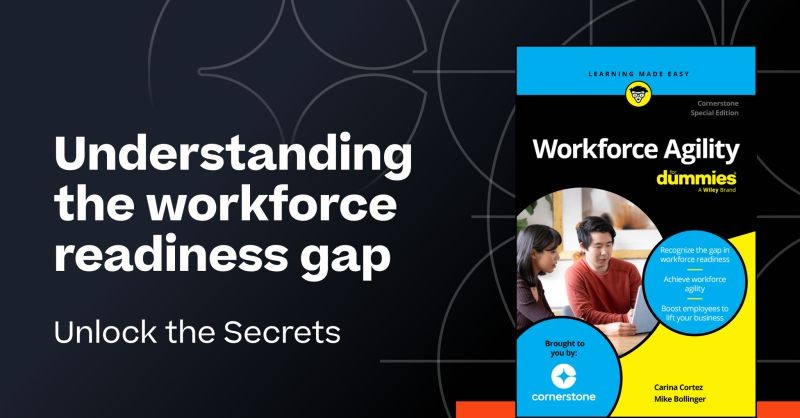Key Takeaways:
- Workforce agility is crucial: Teams that are adaptable, continuously learning, and excelling amid challenges are essential for navigating modern business complexities successfully.
- Focus on workforce readiness: Addressing the gap between current skills and evolving job demands is key to productivity, profitability, and organizational growth amidst technological advancements and global disruptions.
- Strategic workforce management: Proactive learning, talent development, and data-driven decisions can elevate organizational adaptability, increase employee satisfaction, decrease turnover, and enhance overall success in a rapidly changing environment.
Imagine navigating the complexities of modern business with a team that's always ready to adapt, learn and excel, no matter what challenges come your way. That's the promise of workforce agility, and it's more critical now than ever.
The "Workforce Agility for Dummies, Cornerstone Special Edition" guide is here to help you make this vision a reality. Think of it as your ultimate roadmap, packed with practical insights and strategies to ensure your team can thrive amidst continuous change. Whether you're dealing with new technologies, shifting job roles or global disruptions, this guide has you covered.

Here's a sneak peek into the actionable advice you'll find:
This chapter addresses the widening gap between current employee skills and the evolving demands of modern job roles. Continuous changes in technology and job requirements impact productivity, increase turnover, and challenge organizations to meet customer needs.
Highlights:
- Employees often lack the necessary skills to keep up with technological advancements and shifting job roles
- This readiness gap increases costs and reduces profitability
- Research shows emerging trends and the need for employees to meet future demands
- Disruptive technologies and global events are accelerating the gap, leading to potential business stagnation
Focusing on people's development is essential for organizational adaptability. This chapter emphasizes the importance of proactive learning and talent management strategies to harness the workforce's diverse strengths and aspirations.
Highlights:
- Adopt proactive learning and talent management strategies
- Leverage L&D systems, performance management processes, and AI capabilities
- A holistic approach to improving culture, technology, and skills strategy is crucial for creating an agile workforce
Strategically addressing the workforce readiness gap involves upskilling employees, fostering career growth, and transforming organizational practices through data-driven decision-making.
Highlights:
- Provide employees with the right content and technology to develop the necessary skills
- Empower employees to take charge of their career paths, increasing retention and mobility
- Use data-driven decision-making to enhance agility and support diversity and inclusion initiatives
Effective workforce management can significantly enhance organizational success by decreasing risks, reducing costs, and improving employee engagement and customer satisfaction.
Key benefits:
- Reduce the need for new hires and decrease turnover
- Speed up time-to-market for products and services
- Utilize employee skills fully across projects
- Provide career growth opportunities to increase employee satisfaction
- Deliver high-quality products and exceed customer expectations
- Mitigate risks in new markets or product development
- Stay ahead of the competition through continuous skill development
Why download the guide?
The "Workforce Agility for Dummies, Cornerstone Special Edition" guide is your essential resource for navigating the complexities of modern workforce management. By investing in the continuous development of your people and strategically leveraging technology, your organization can enhance agility, improve productivity, and secure long-term success.
Embrace workforce agility to keep up with change and lead it. Download the complete guide now to start transforming your organization for the future.


